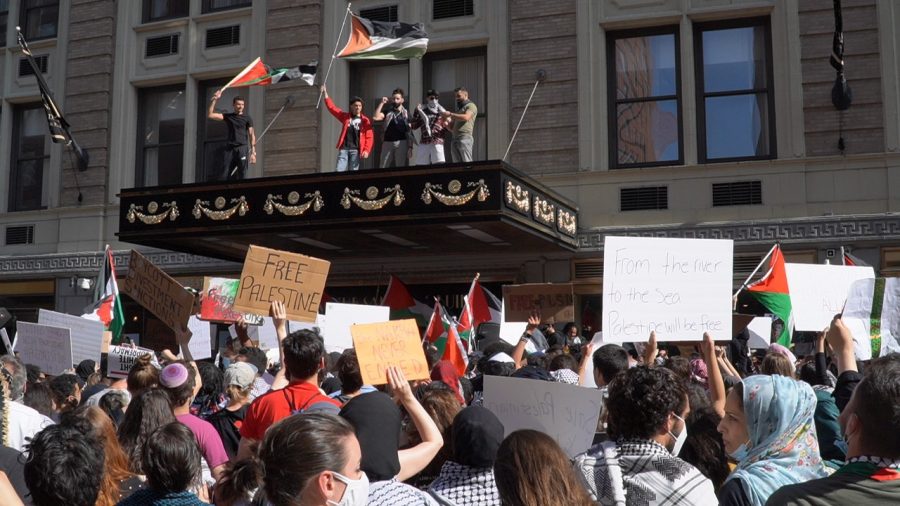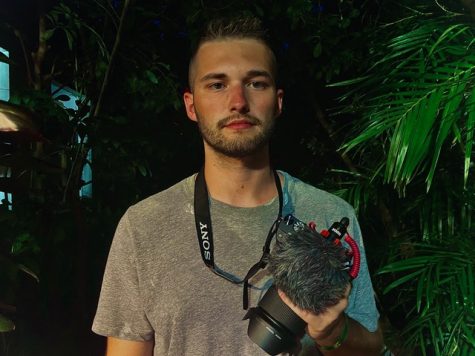Ongoing tensions between Palestinians and Israeli settlers in Jerusalem and the West Bank remain high, months after a two-week period of violence this past May into June.
The Human Rights Watch has recently accused the Israeli and Palestinian militias of committing war crimes in the Gaza Strip and Israel. These areas are recognized as occupied Palestine under international law, declared by the United Nations.
The violence began on May 6, when the Israeli Supreme Court ruled to evict six Palestinian families from the city’s Sheikh Jarrah neighborhood, which is recognized by international law as Palestinian territory under Israeli occupation.
Tensions reached a breaking point when the Al-Aqsa Mosque in Jerusalem was stormed by the Israeli Police during the final night of Ramadan, the most important holiday for Muslims, injuring hundreds of worshippers.
This coincided with Jerusalem Day, an Israeli national holiday celebrating the reunification of the city of Jerusalem under Israeli control. Israelis celebrated with the annual Dance of Flags and paraded around the Western Wall, the holiest site in Judaism. The Western Wall is located directly adjacent to the Al-Aqsa Mosque, as both lie on the Temple Mount, considered one of the holiest sights in Judiasm, Islam and Christianity alike.
According to the Associated Press, immediately after the celebrations ended violence broke out between the two groups, as Israeli nationalists began to taunt Palestinians outside of the Al-Aqsa Mosque. Palestinians responded and the clashes intensified until they were broken up by police, who fired tear gas and rubber bullets into the crowd.
These actions angered not only Palestinians in the West Bank and Gaza Strip, but Arabs all over the world.
Jerusalem, which is home to the Greek Orthodox, Armenian Apostolic and Roman Catholic Patriarchs, as well as clergy from the Syriac and Coptic Churches, blamed the growing tensions on the increase of right-wing radicals moving to Jerusalem, according to a statement by the Middle East Council of Churches.
Fatah, the left-wing nationalist party who governs the West Bank, condemned the increase right-wing nationalism and violence that occurred in Jerusalem.
Hamas, the Islamist party that controls the Gaza Strip, issued an ultimatum to Israel to withdraw from the al-Aqsa mosque and Sheikh Jarrah by 6:00 p.m. on May 10, or they would take revenge. When Israel refused, Hamas began firing rockets into Israeli territory. The Israeli government responded forcefully, igniting further tension between the two.
The result was a 12 day long conflict between the Israeli government and Hamas, which caused casualties on both sides. However, the civilian casualties in Gaza were much higher due to Israel’s Iron Dome rocket defense system, which is designed to intercept and destroy short-range rockets and artillery shells before they can reach populated areas.
The Office for the Coordination of Humanitarian Affairs reported that Israel suffered 15 casualties, while the Palestinians suffered 256 casualties. Much of the infrastructure in Gaza was destroyed as a result, including homes, schools, hospitals, and the al-Jalaa high-rise building, which housed the offices of the Associated Press and Al Jazeera in Gaza City.
Reporters Beyond Borders and the Committee to Protect Journalists called these attacks war crimes. Gary Pruitt, CEO of the Associated Press, said he was “shocked and horrified that the Israeli military would target and destroy the building,” and declared that, “the world will know less about what is happening in Gaza because of what happened today,” according to a statement by the Associated Press.
In addition to the airstrikes and rocket attacks between the two, riots broke out across Israel between its Jewish and Arab populations, leading to several synagogues being vandalized in response to the Al Aqsa Mosque being rushed, and Israeli nationalists attacking Arabs on the streets. The most contentious rioting happened in Jerusalem, as well as the cities of Ashkelon and Lod, which are all home to large Arab populations.
In response to the escalation of violence, the United Nations called for an immediate ceasefire. According to The Independent, diplomats from France, Greece, Egypt, Jordan, the United Arab Emirates and the United States all drafted a ceasefire, which went into effect on May 21.
The conflict between Israel and the Palestinians, as well as other Arab states, dates back to 1948, when the UN partitioned the former British mandate of Palestine into a Jewish and Arab state. Many Jews see Israel as a reclamation of their ancestral homeland in Judea. However, Palestinians view Israel as an illegal occupation of land they have inhabited for many generations, with both Muslim and Christian Arabs living alongside Jews for centuries before the partition, Elon University reported.
This led to subsequent wars in 1948, 1956, 1967, 1973, 1982, 2000 and 2006. The only decade without violence between the two groups was in the 1990s, when the Israeli Prime Minister Yitzhak Rabin and the leader of the Palestinian Authority Yasser Arafat nearly signed a peace deal.
The peace treaty almost led to a two-state solution, which would have resulted in an independent State of Palestine alongside the State of Israel, both being recognized by the internal community with diplomatic relations with one another. The alternative to this plan is the one-state solution, which would incorporate both the Jewish and Arab communities into one multiethnic state.
The situation sparked an international outcry and led to worldwide pro-Palestine as well as pro-Israel demonstrations.
In Boston, protestors gathered outside Boston Public Library on May 15, where they shouted, chanted, waved Palestinian flags and held banners.
The protestors then marched over to the Israeli Consulate General near Beacon Hill, where they continued to shout and chant and play patriotic music, climbing onto awnings and up lampposts in order to wave their flags and banners in the windows of the Consulate General.
The protestors consisted of not only Palestinians and other Arabs, but many other Americans as well supporting their cause. Jewish organizations such as the Jewish Voice for Peace, as well as U.S. military veteran organizations, such as Veterans for Peace, were both noticeably present, as they marched alongside the protestors to express their resentment towards the actions of the Israeli government.
Although there were a few pro-Israel counter protestors present, the interactions between the two groups remained peaceful throughout the entire duration of the march.









Alex Svenson • Oct 2, 2021 at 8:20 pm
For anyone interested in watching my short film on this protest, check it out here: https://www.youtube.com/watch?v=6AVLLdBhOSg